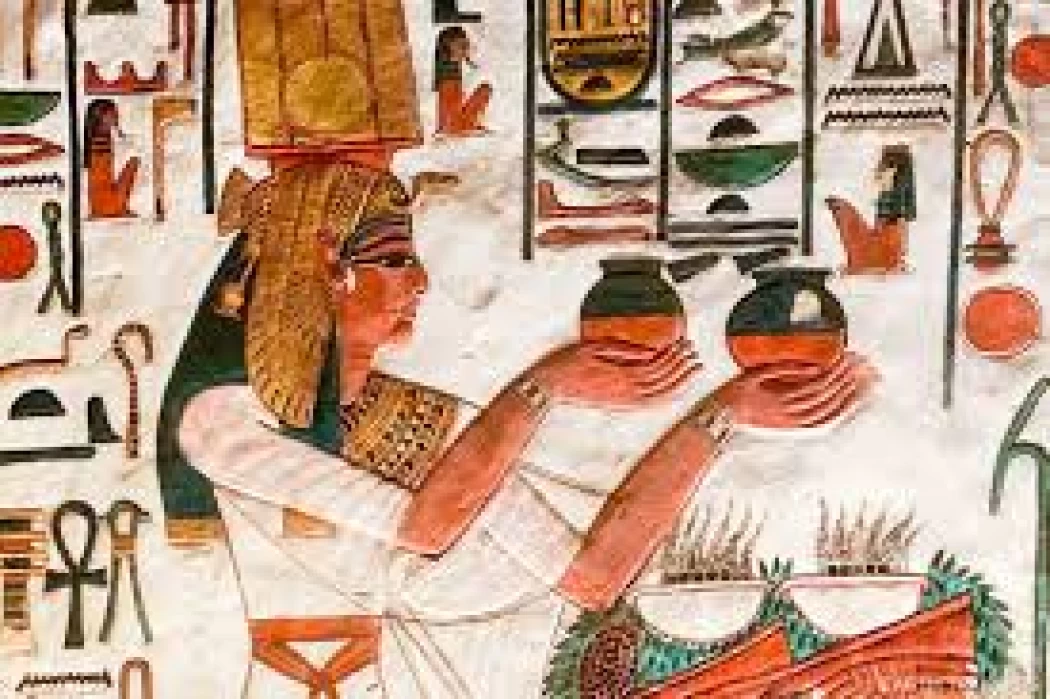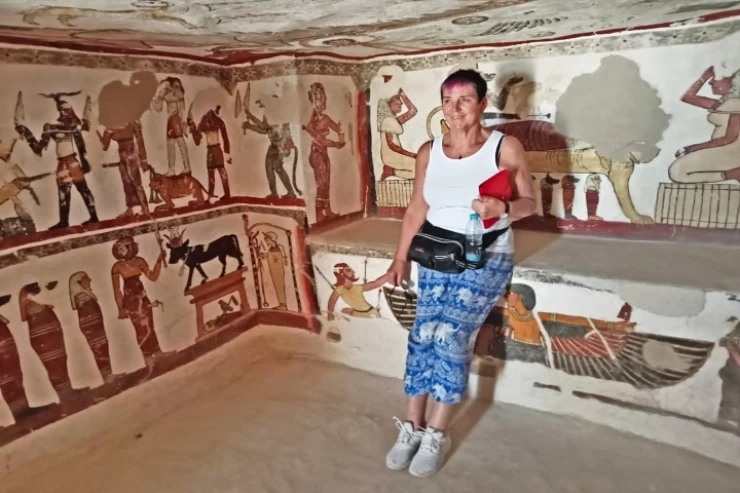
Queen Nefertari
Queen Nefertari
In the thirteenth century BC, Nefertari, cherished spouse to Ramses II, lay heroically buried in all of the tombs located at the Valley of the Queens. But was it true that the sovereign’s singular assistance that earned she the great favor, the love of the pharaoh?
The ancient history of Egypt is filled with famous women who shaped the political landscape. Naturally, we remember the real “pharaohs” Hatshepsut (1460 - 1457 B.C.) and Cleopatra VII (51- 30 B.C), who governed the territory of Egypt for several decades. We cannot forget the remarkable Queens of the New Kingdom, 1550- 1090 B.C. Nefertiti, wife of the pharaoh Akhenaton (1371–1355 BC) and Nefertari, the favorite wife of pharaoh Ramses II (1279-1213 BC).
While the first is known for the amazing bust now lying in Berlin, the second is mainly recognized for its luxurious mausoleum located in the Valley of the Kings.
The tomb of Nefertari, as regards the dimensions and, particularly, the embellishment, is considered to be the most lovely by far of all tombs located in Egypt. Such a totality of images of a given thesaurus is absent in the enormous tombs of the Valley of the Kings. The thematic material is not exactly remarkable in creativity demonstrating capital achievements. The most heroic is the so-called heroic in case the hero died and hisba brother sent his soul to the world of the dead, ruled by Osiris. This journey begins from the “gold room”, where the queen's sarcophagus was located.
Nefertari Merienmut (or Meritamout Nfrt jrj mrjt n Mwt) is a Queen of Egypt of the 19th dynasty. She was the Great Royal Wife of Pharaoh Ramses II (1279-1213). Like Queens Tiyi I and Nefertiti, she will not be the Divine Wife of Amun. In the texts that her husband left, he calls her: The Lady of Charm, the Rich in Praise, the Beautiful of Face and the Sweet of Love, She for whom the sun shines. Although her origins and genealogy are uncertain, her birth year is estimated to be 1295. According to some experts, she might be her husband's sister or half-sister because she was born as the daughter of Pharaoh Seti I (1294–1279). Others claim she is descended from Ay II (1327–1323), Tutankhamun's successor (1336/1335–1327), and that she is associated with the 18th dynasty.
Before he took the kingdom at the age of fifteen, Nefertari wed Pharaoh Ramses II when she was just thirteen.
As soon as Ramses II took power, she was crowned Queen and Great Royal Wife and took the name Nefertari Merienmut (or Meritamout), she was then only nineteen years old. She would remain the most important of all the wives of Ramses II. Certain aspects of her personality, according to what can be reconstructed from the official documents in our possession, the iconography and her titulature, show similarities with Queen Tiyi I.
Latest Articles
Admin
Aswan Governerate in Egypt
Aswan was known as ‘Sonu’ in ancient Egyptian times, meaning market, as it was a trading centre for caravans coming to and from Nubia. In the Ptolemaic era, it was called ‘Sin’ and the Nubians called it ‘Yaba Swan’. It was also known as the Land of Gold because it served as a great treasure or tomb for the kings of Nubia who lived there for thousands of years. Before the migration, Aswan's borders extended from Asna in the east to the border of Sudan in the south, and its inhabitants were Nubians, but after the Islamic conquest of Nubia, some Arab tribes settled there.
Admin
About Luxor Governorate in Egypt
The South Upper Egyptian area is home to the Egyptian governorate of Luxor. Its capital is Luxor, which was formerly Thebes, the capital of Egypt throughout multiple pharaonic eras. Its centers and cities are spread over both sides of the Nile River. The said governorate was established by Presidential Decree No. 378 of 2009, which was promulgated on the 9th of December of that year.
Admin
History of kafr El Sheikh Governorate
Kafr El Sheikh Governorate, located in the far north of Egypt in the Nile Delta, overlooking the Mediterranean Sea, is characterised by the diversity of natural life and environments, and is one of the Egyptian cities that can be visited after the end of the first semester exams at universities and schools, as it features many diverse tourist and recreational places at symbolic prices within everyone's reach.
Admin
Egypt's New Administrative Capital
The New Administrative Capital is considered the project of the era because it reflects a perfect image of the future and progress on the economic, cultural, social and civilisational level, as the capital is considered the new capital of Egypt at the present time. The importance of the New Capital is that it is a comprehensive transformation of the future of buildings, services and national and mega projects in Egypt.
Admin
Al Gharbia Governorate
The Governorate of Gharbia is inclusive in the geographical area of The Arab Republic of Egypt which is in the African continent, more specifically in the region surrounding the Nile delta, between Damietta and Rashid governance. To the control of the region from the north is Kafr El-Sheikh Governorate, from the south Menoufia Governorate, from the east – Dakahlia, Qalyubia Governorates, and to the west is the Beheira Governorate.
Admin
Hamata Islands (Qulaan Archipelago) in Marsa Alam
Each reserve has several sectors. In Wadi El Gemal Reserve, there is one of the natural areas called the Hamata area or Hamata sector in Wadi El Gemal Reserve. Its sectors are the perfect and most ecological, land and water, and host countless animals and plants found in the oceans and on the land.















